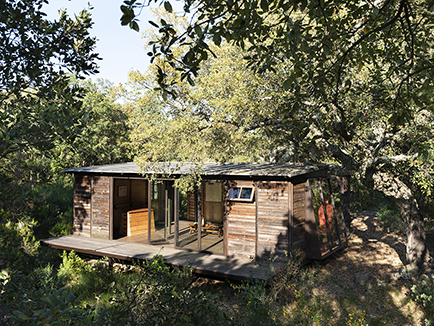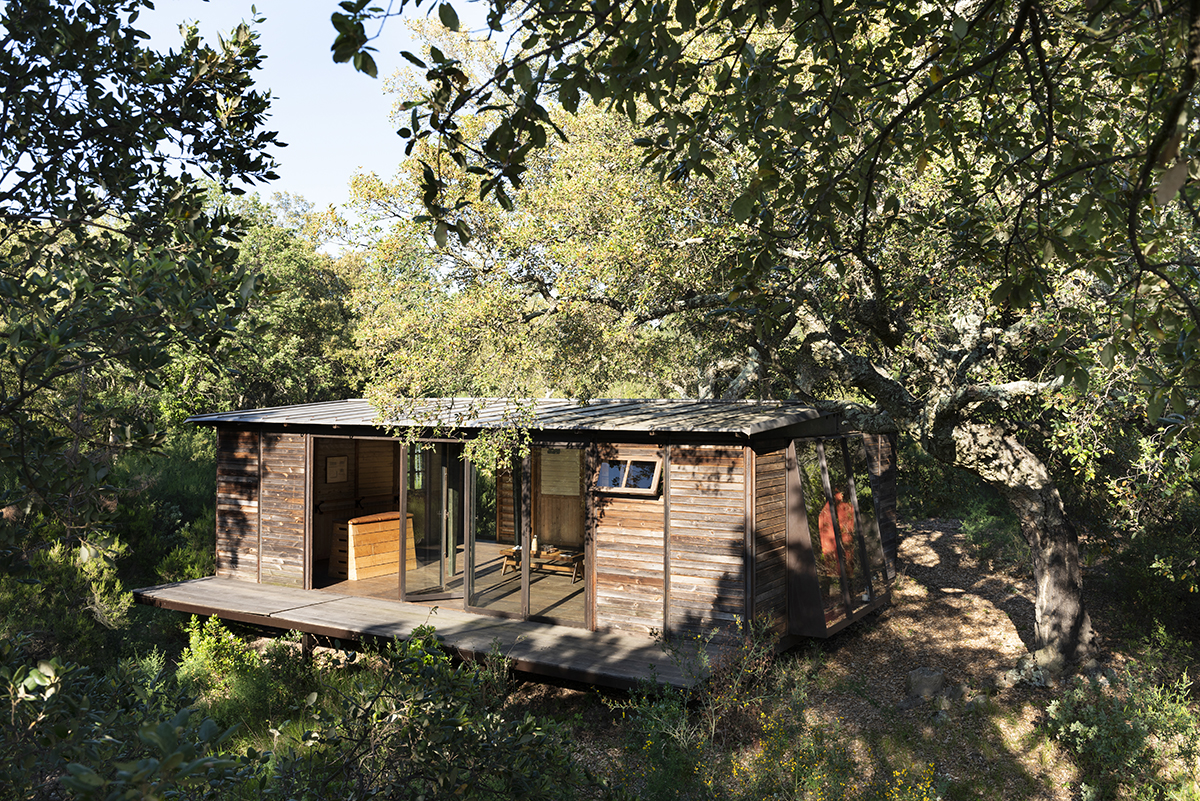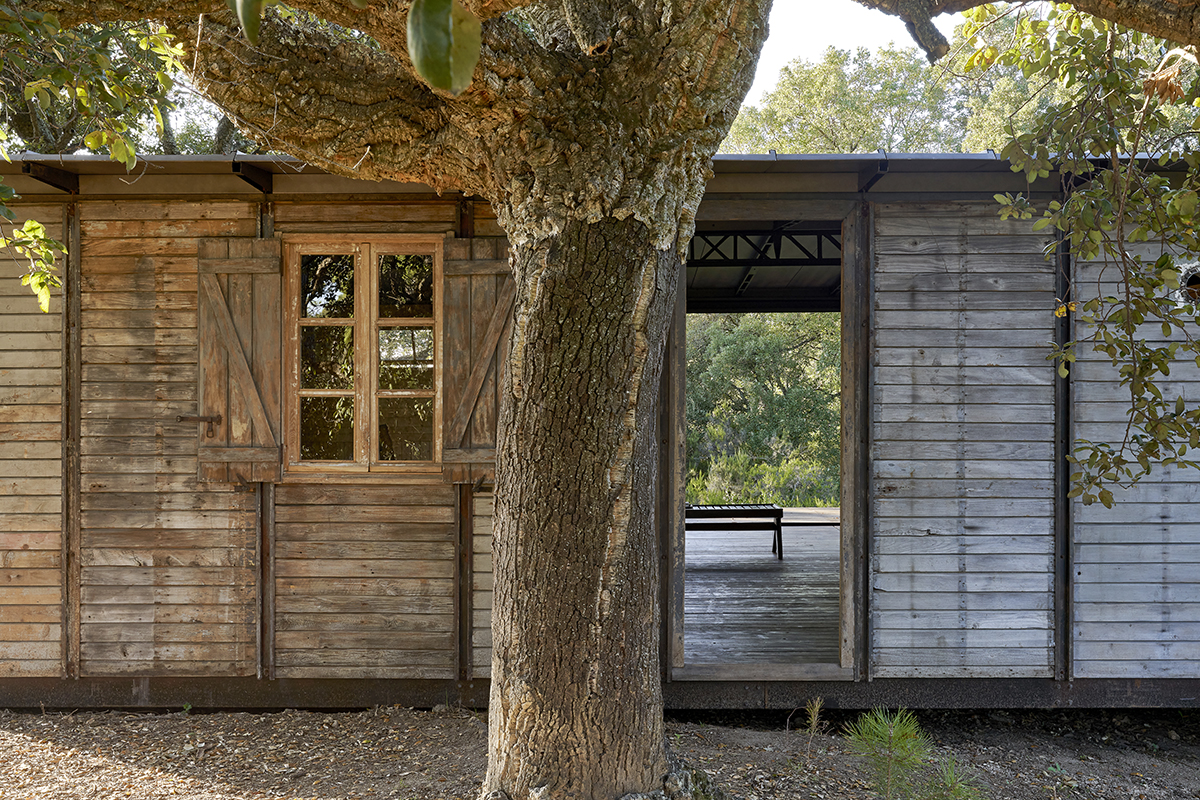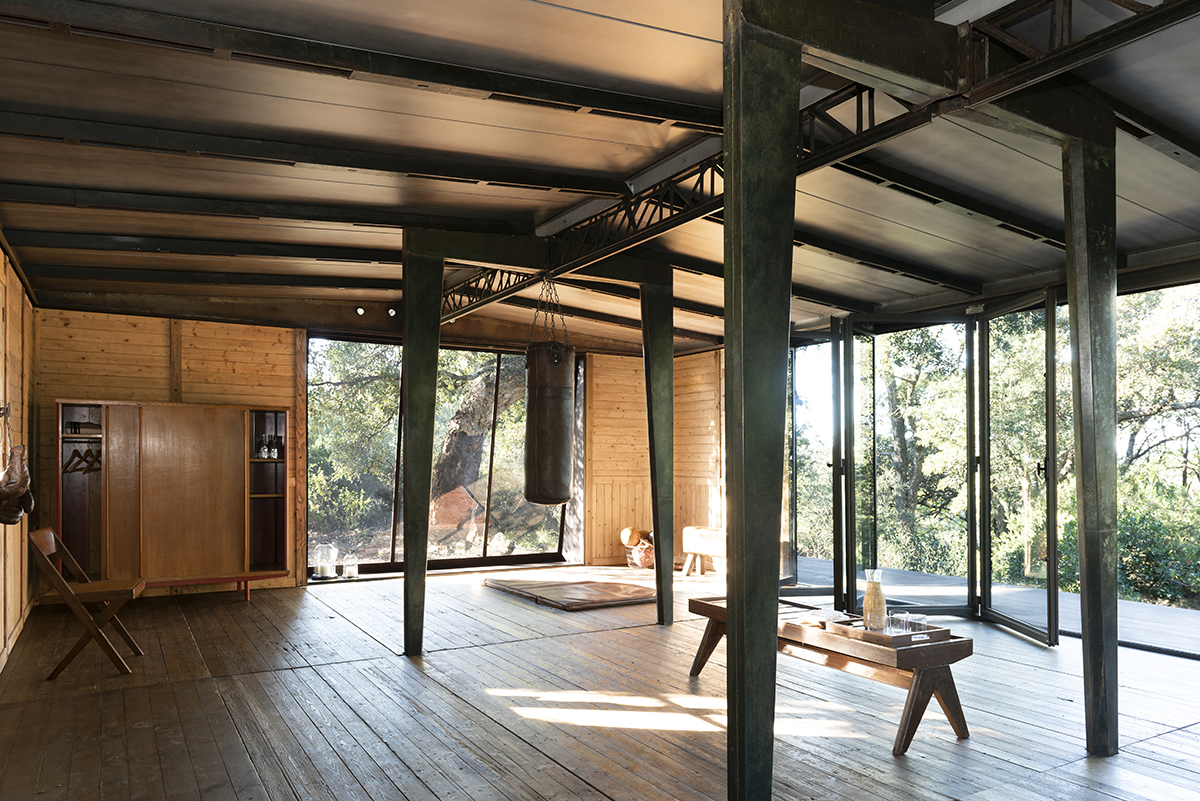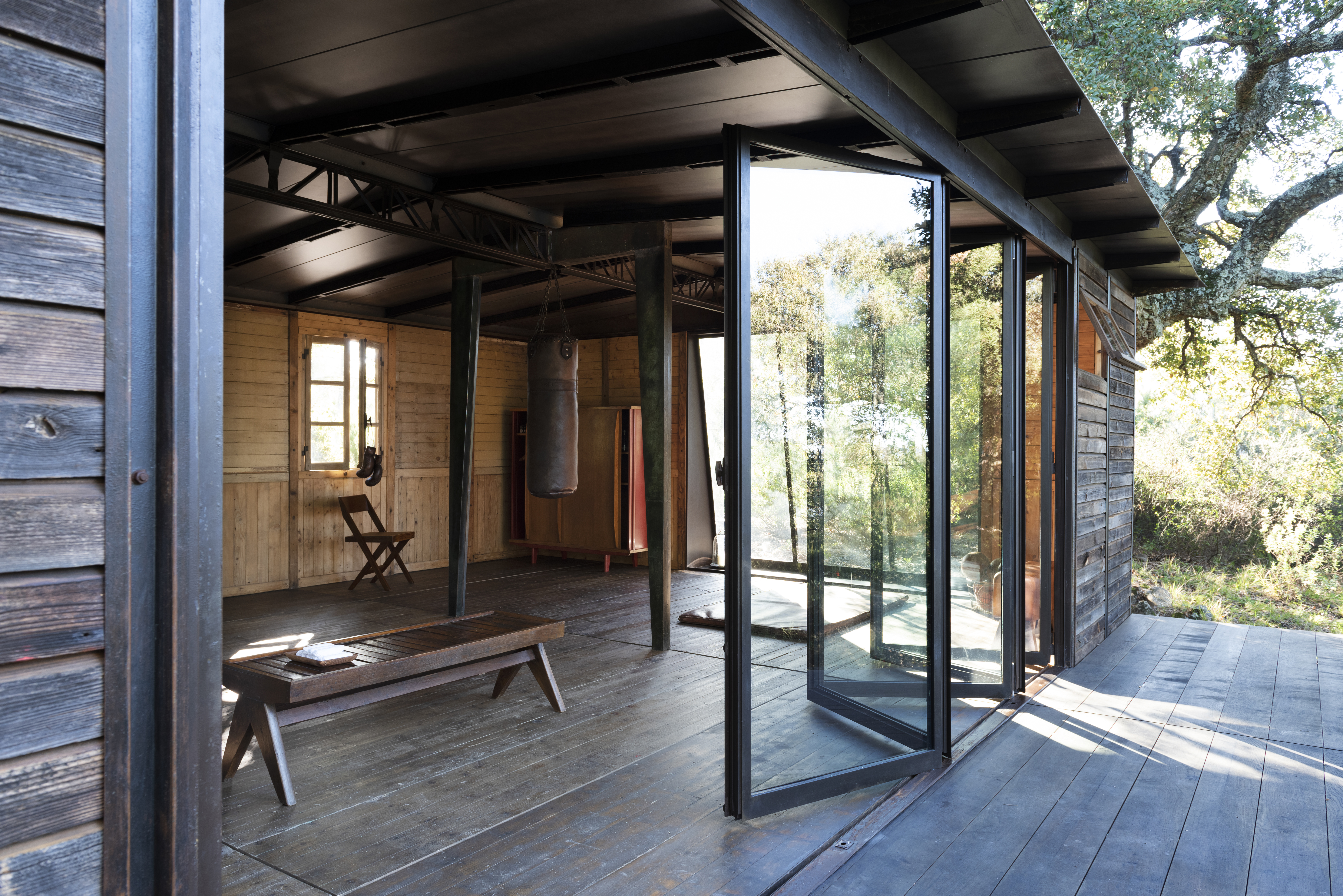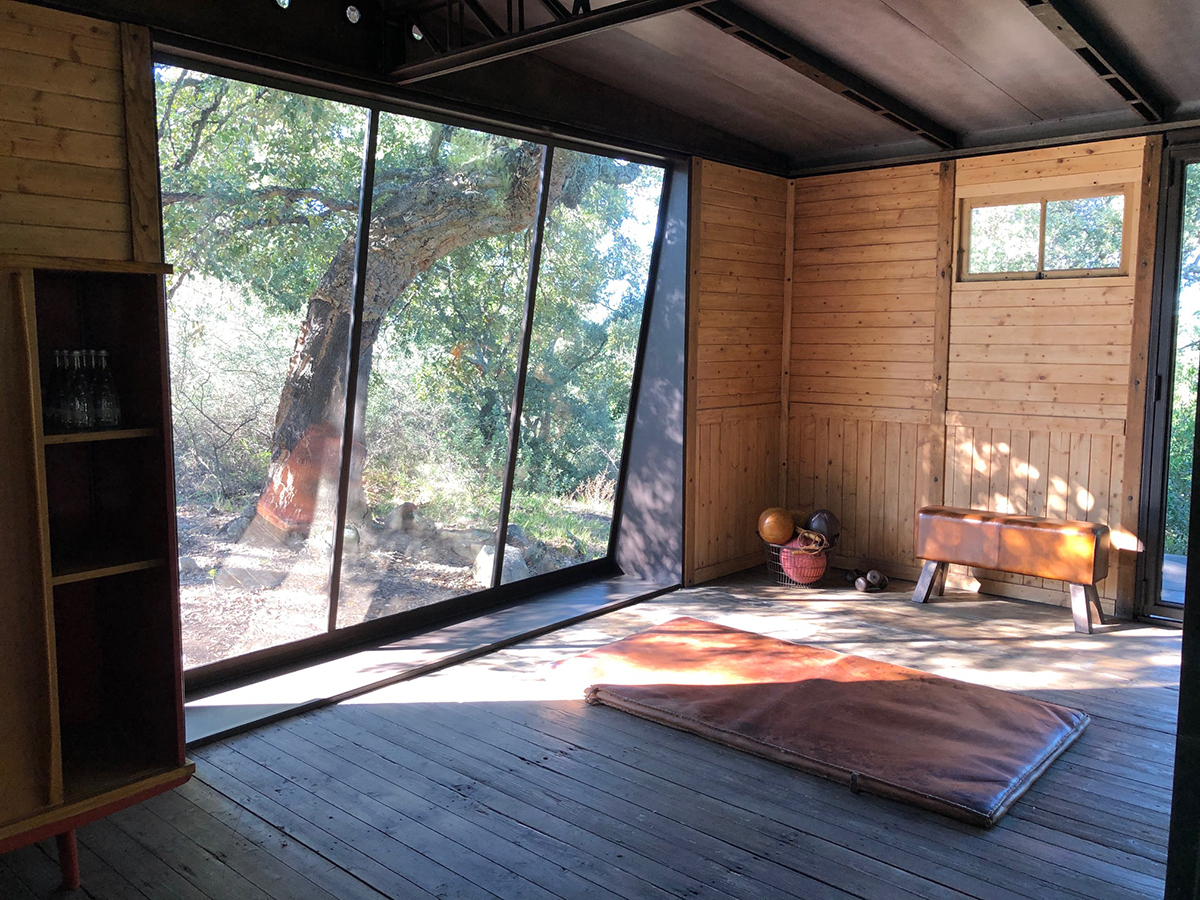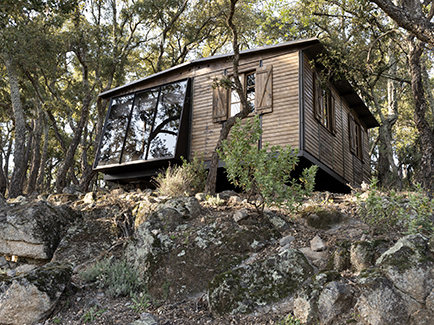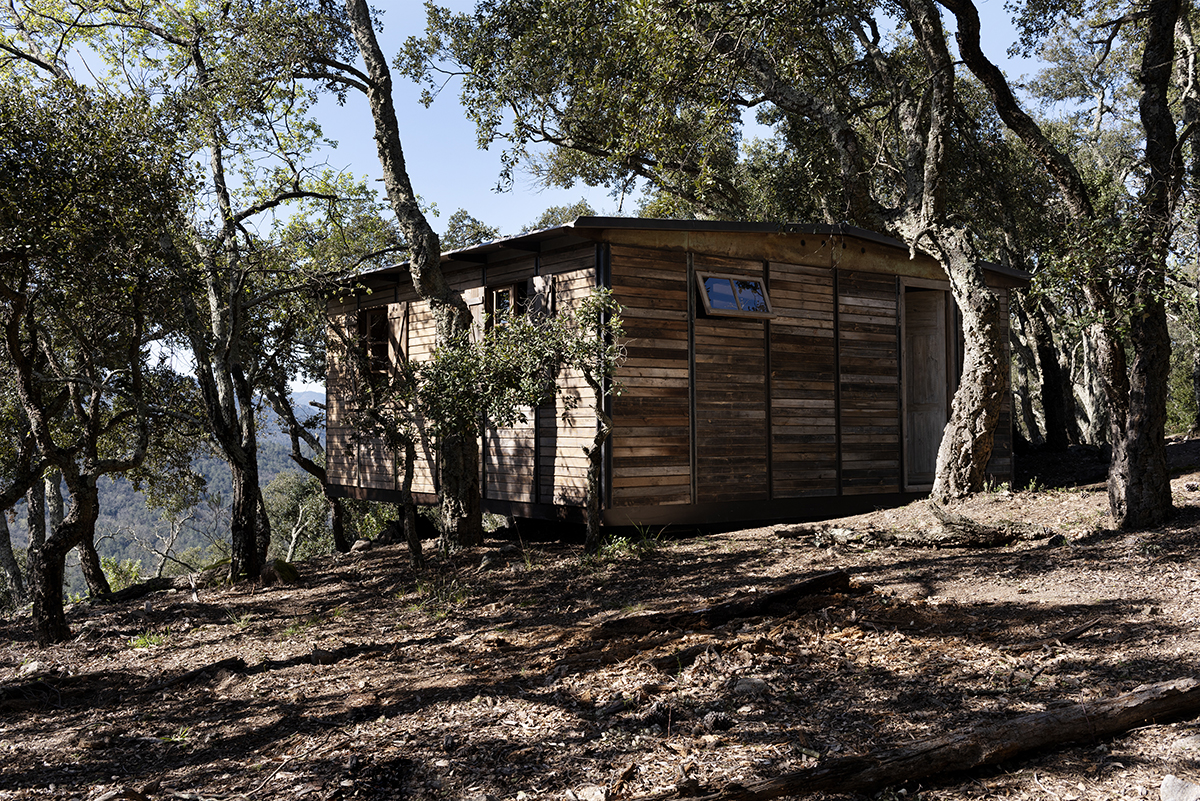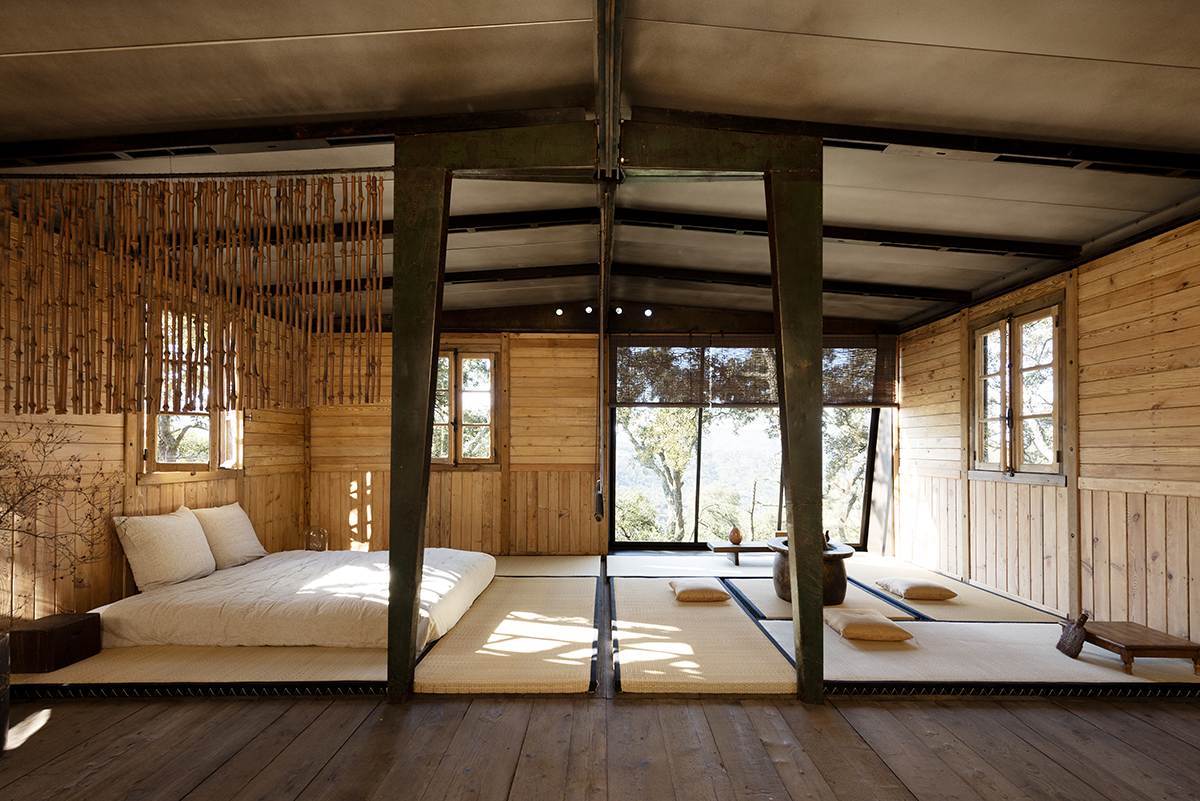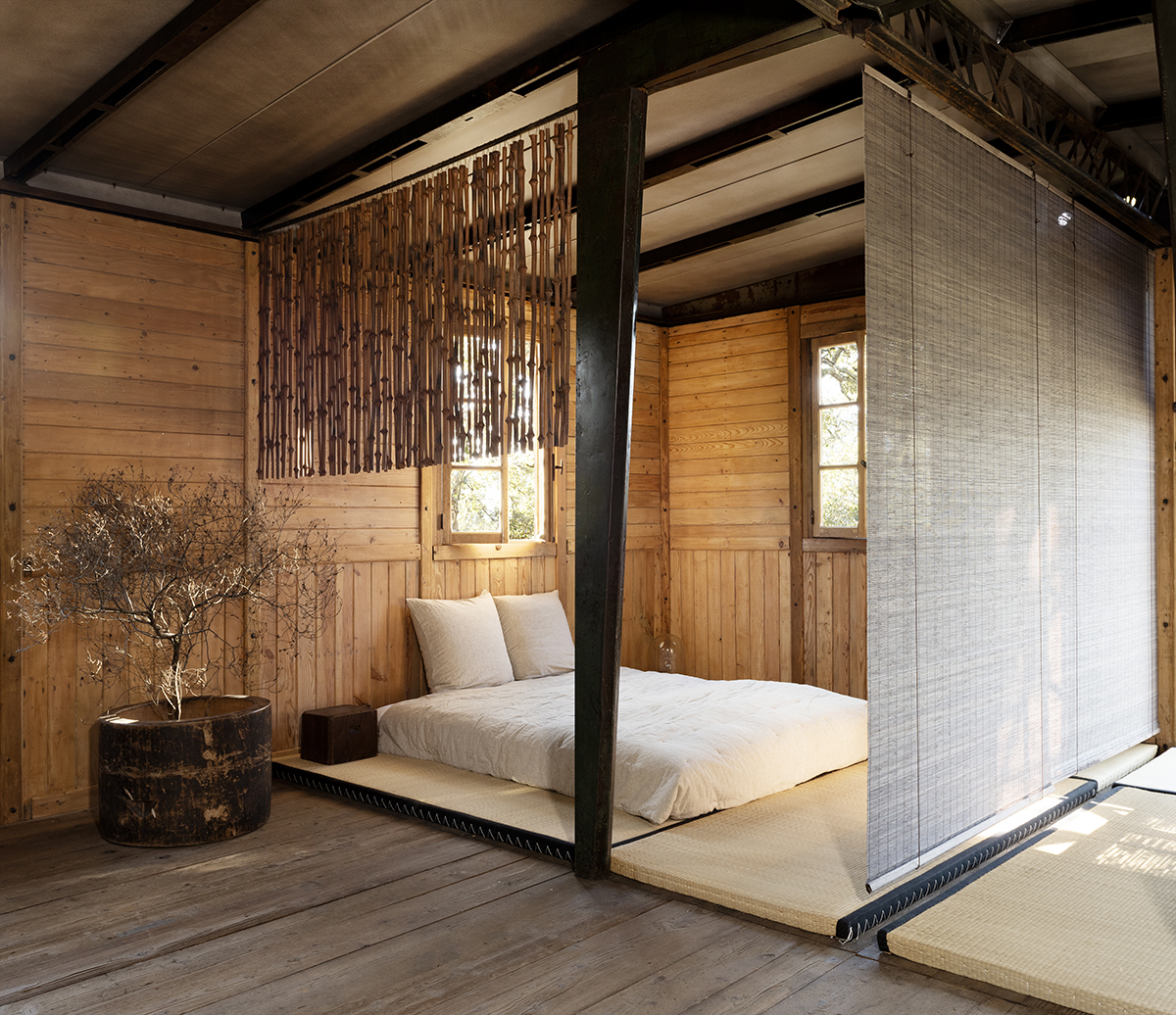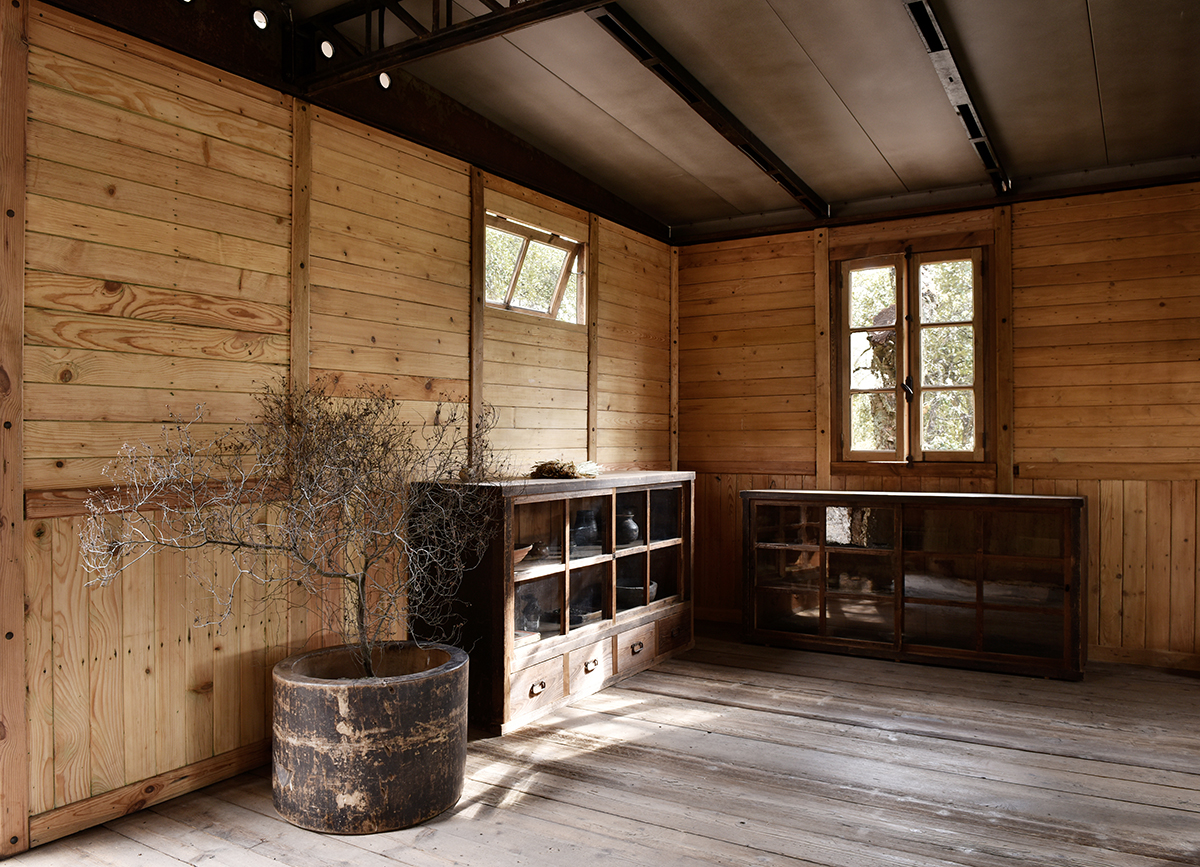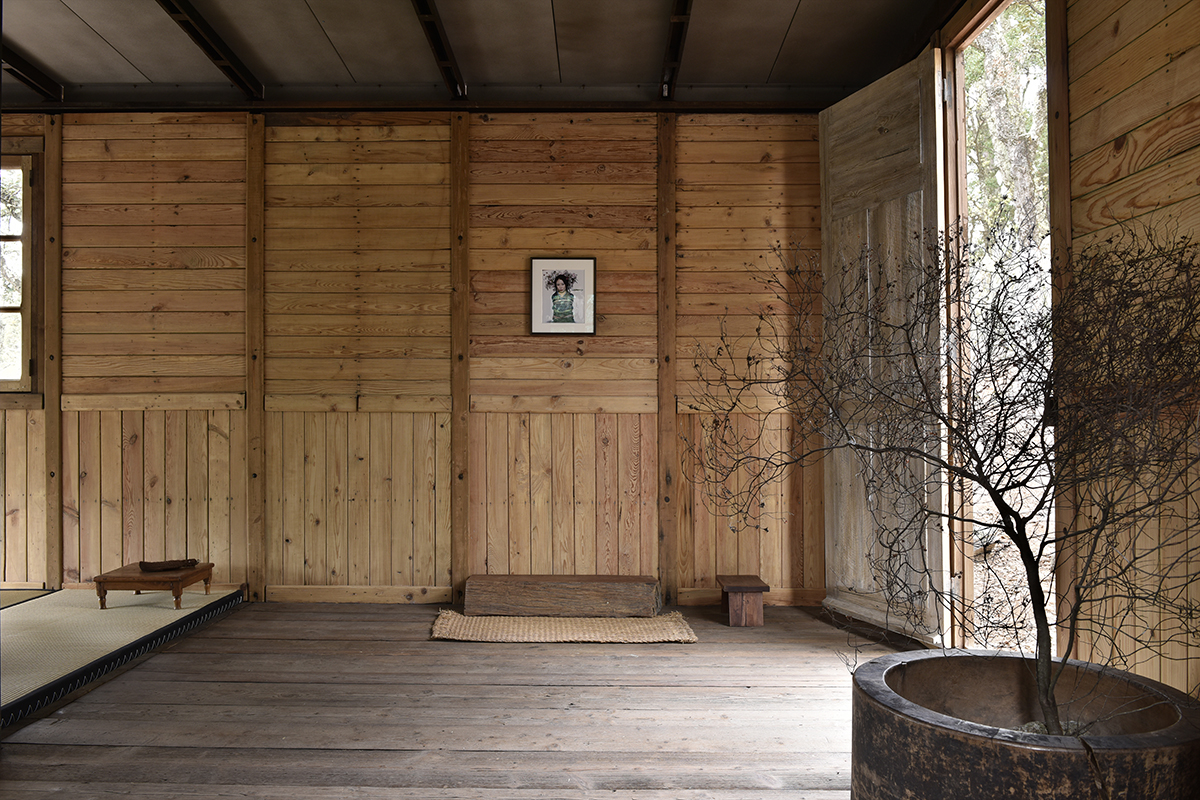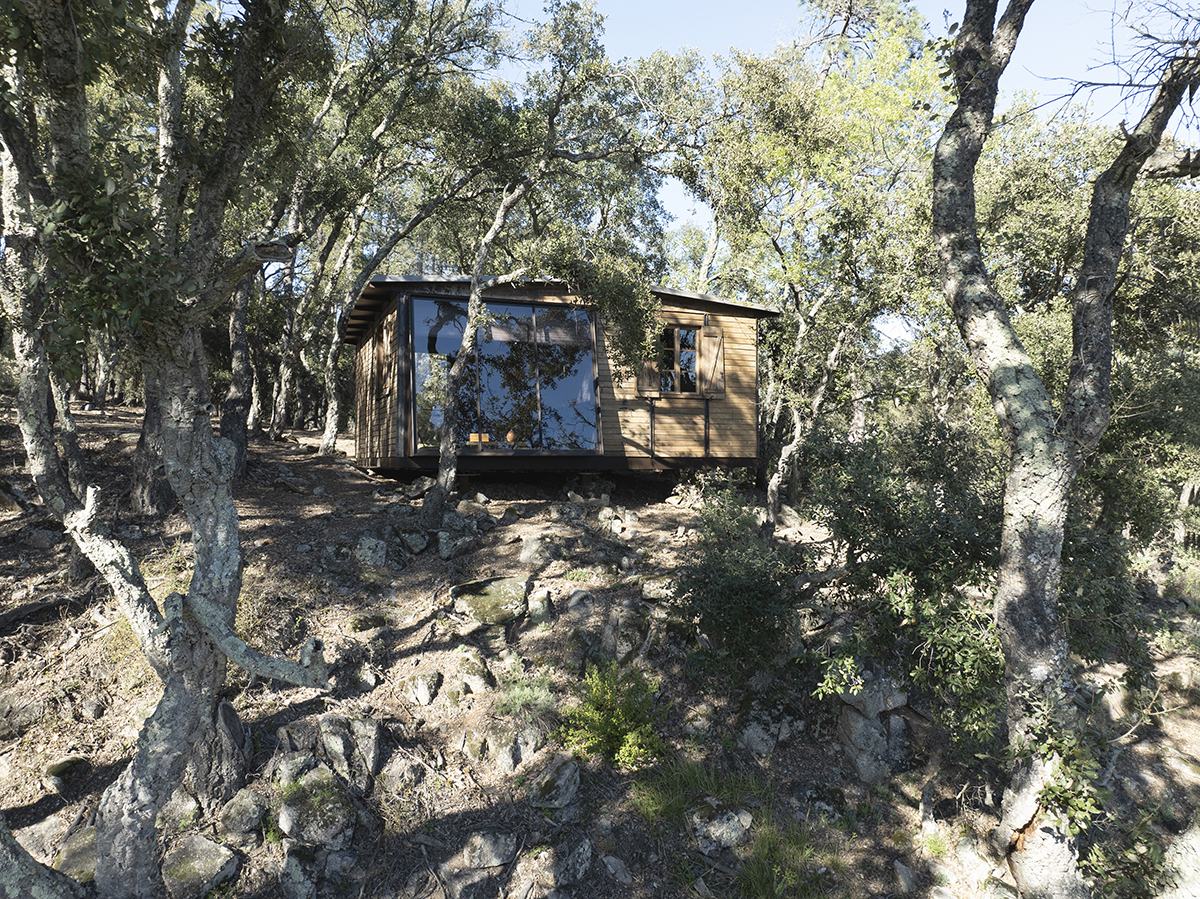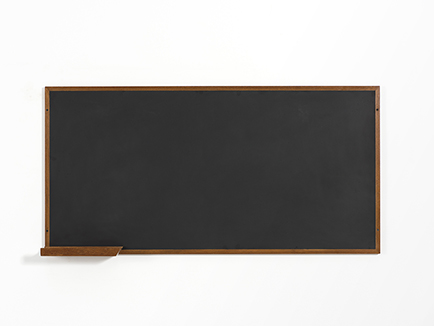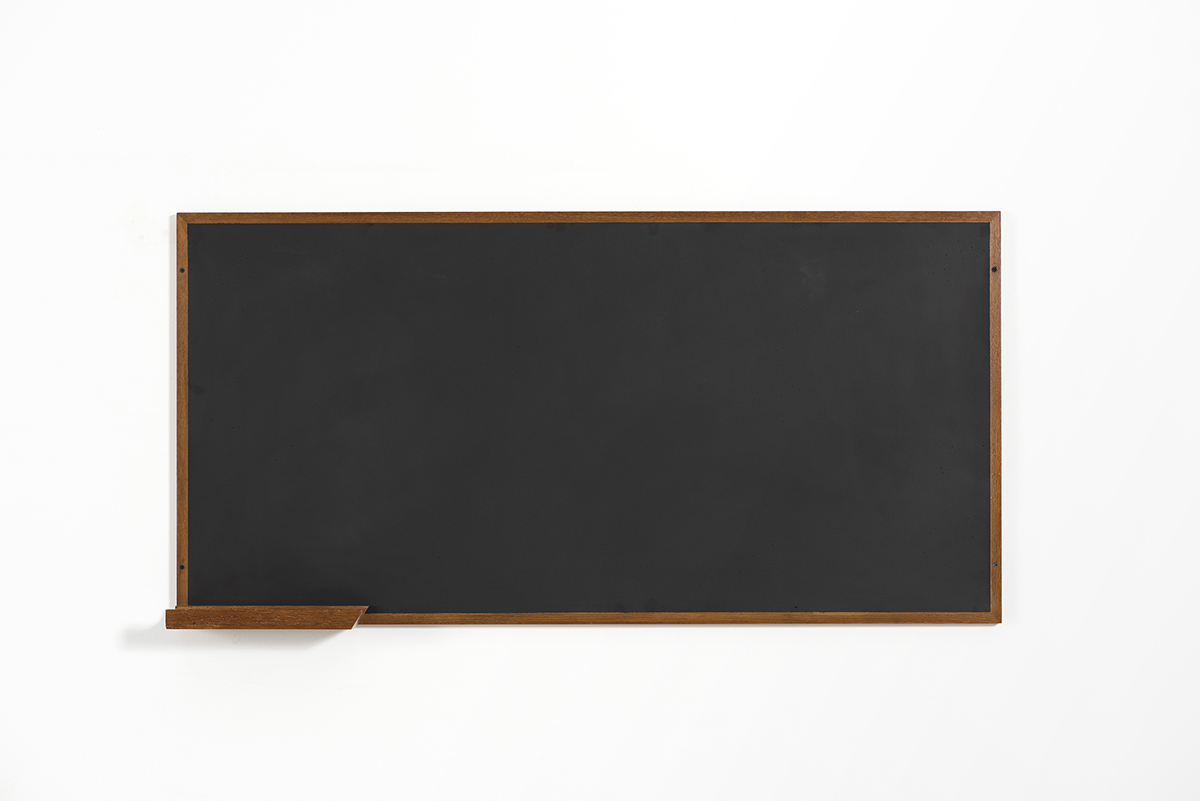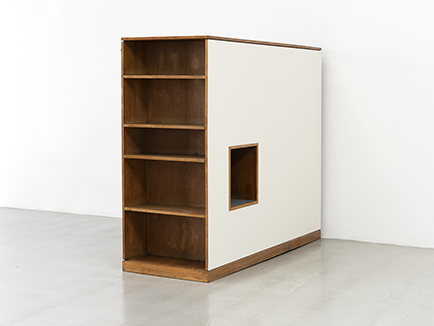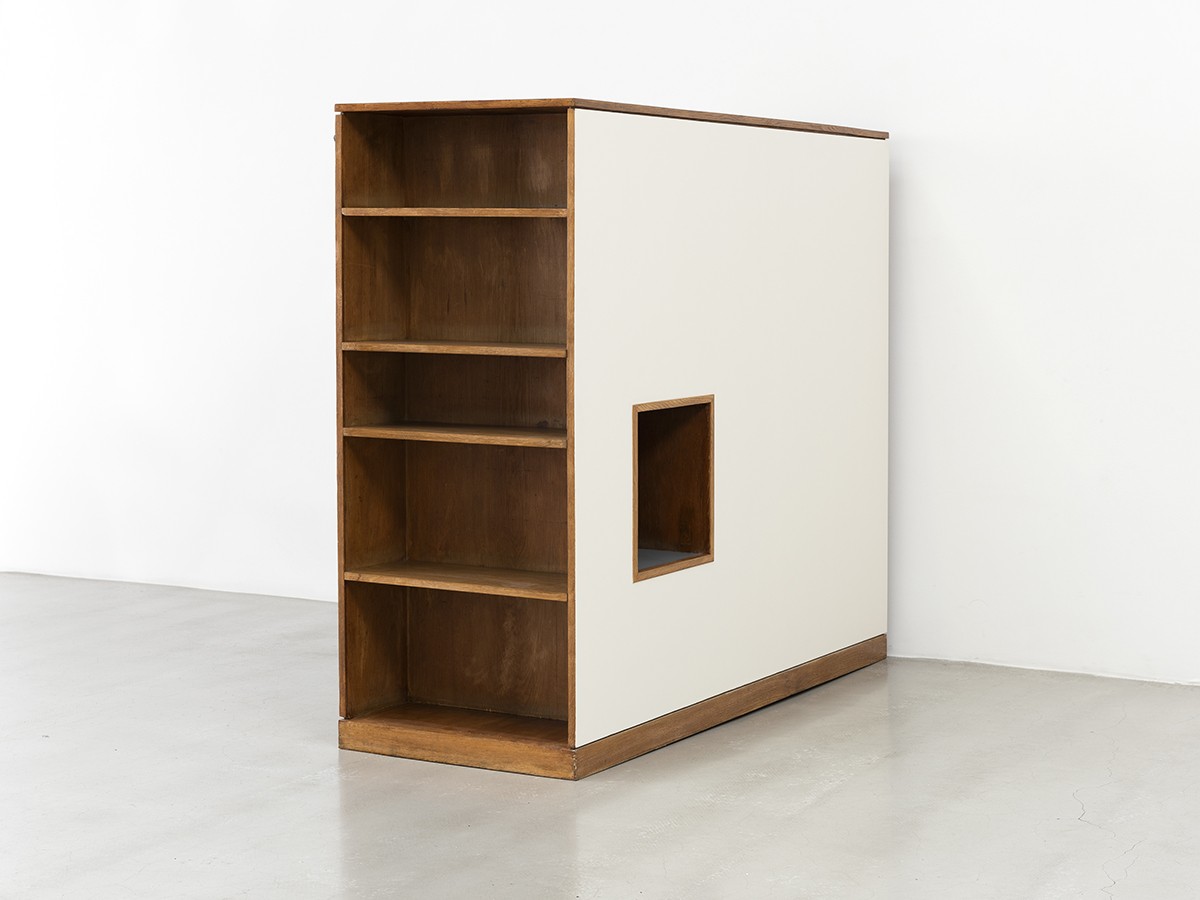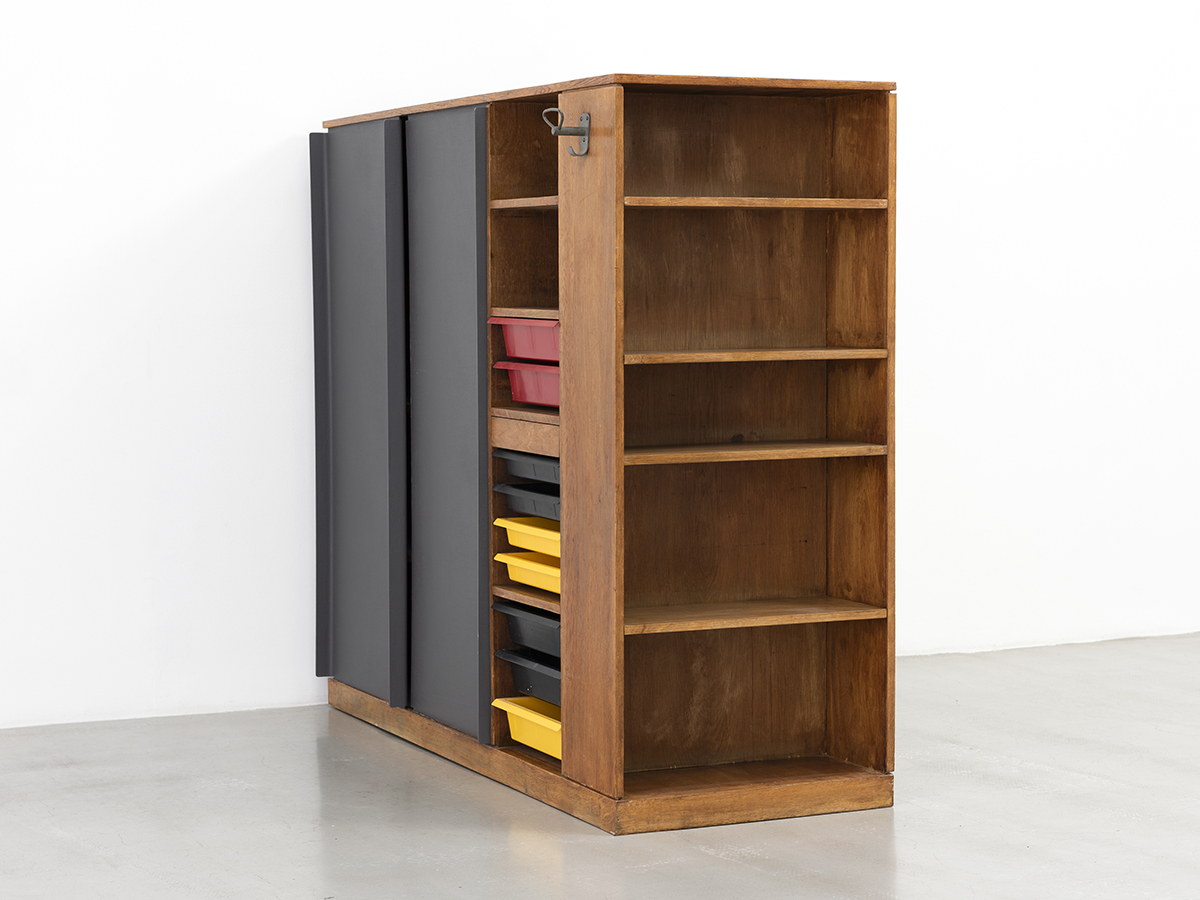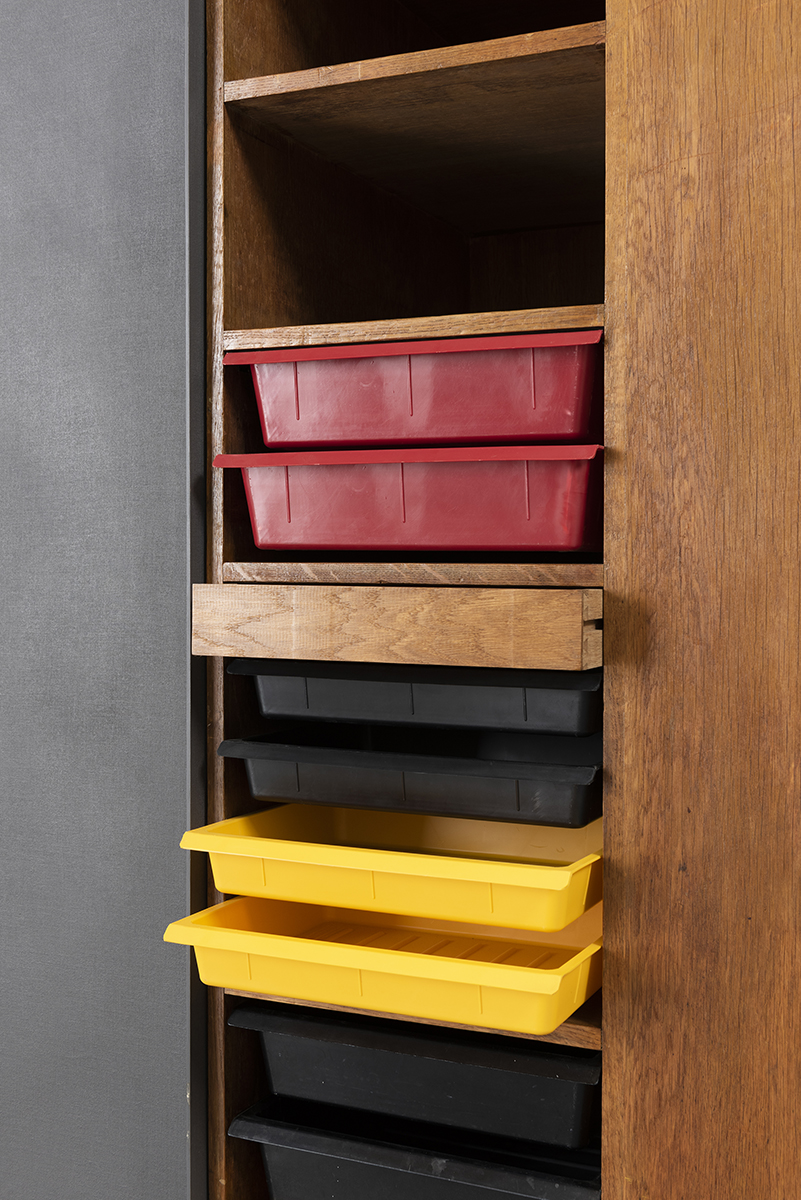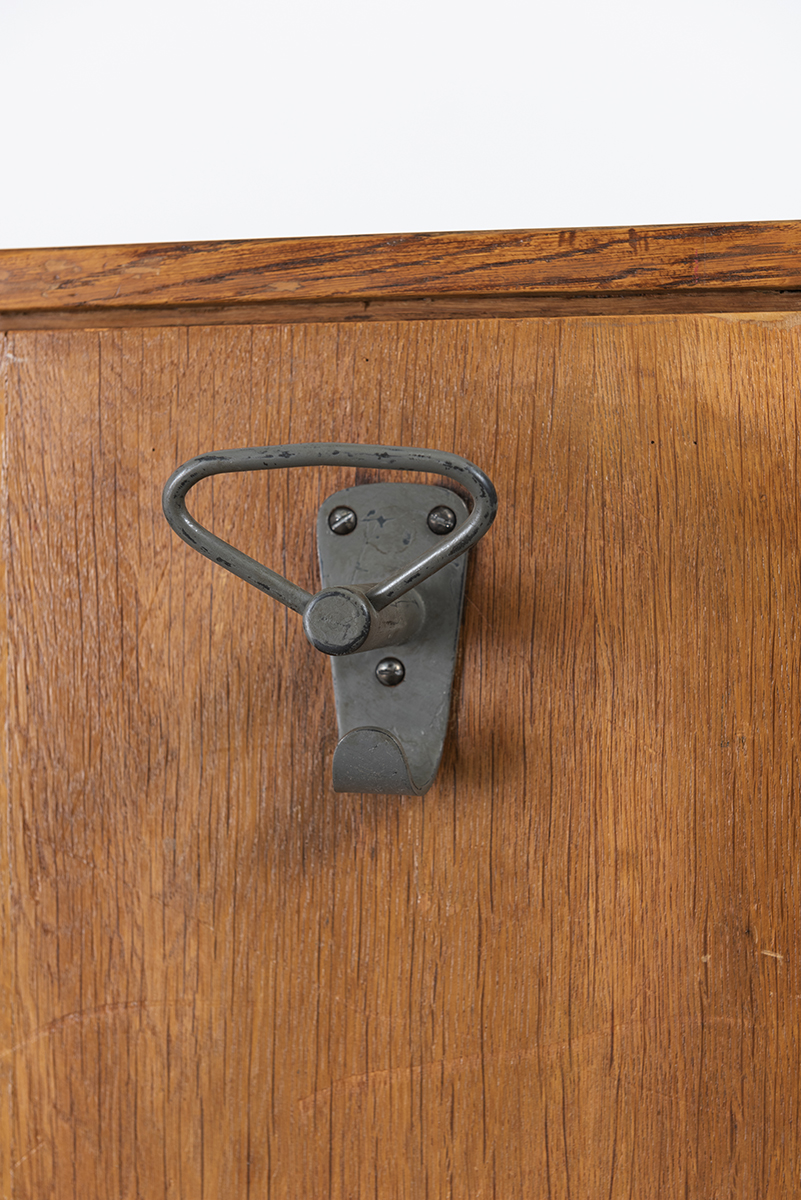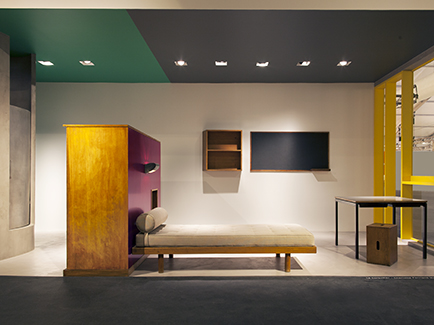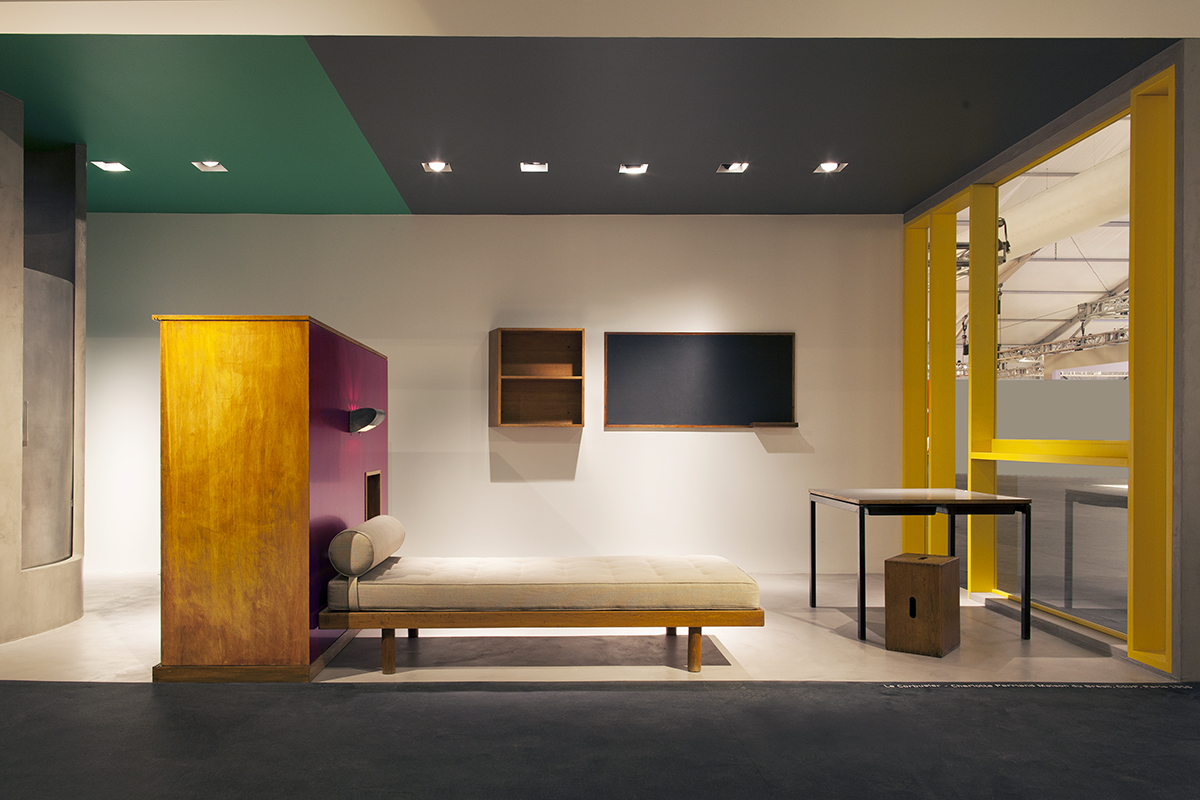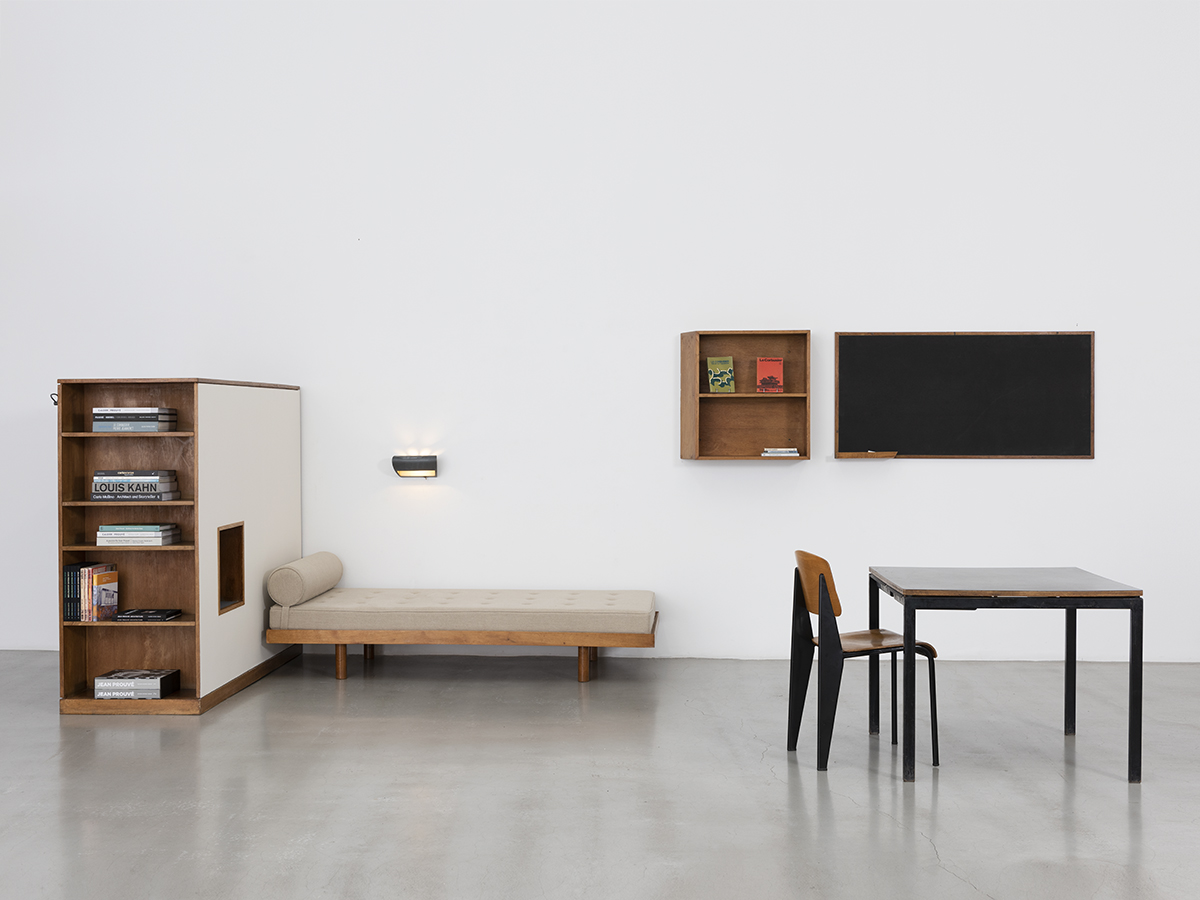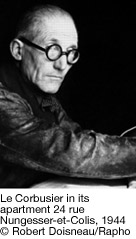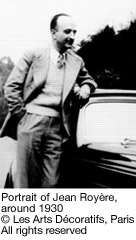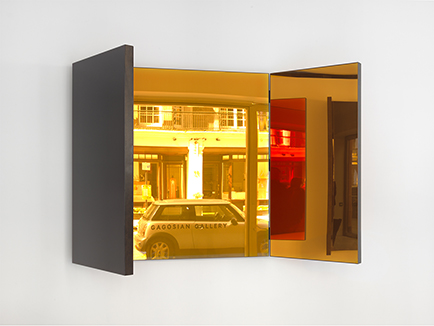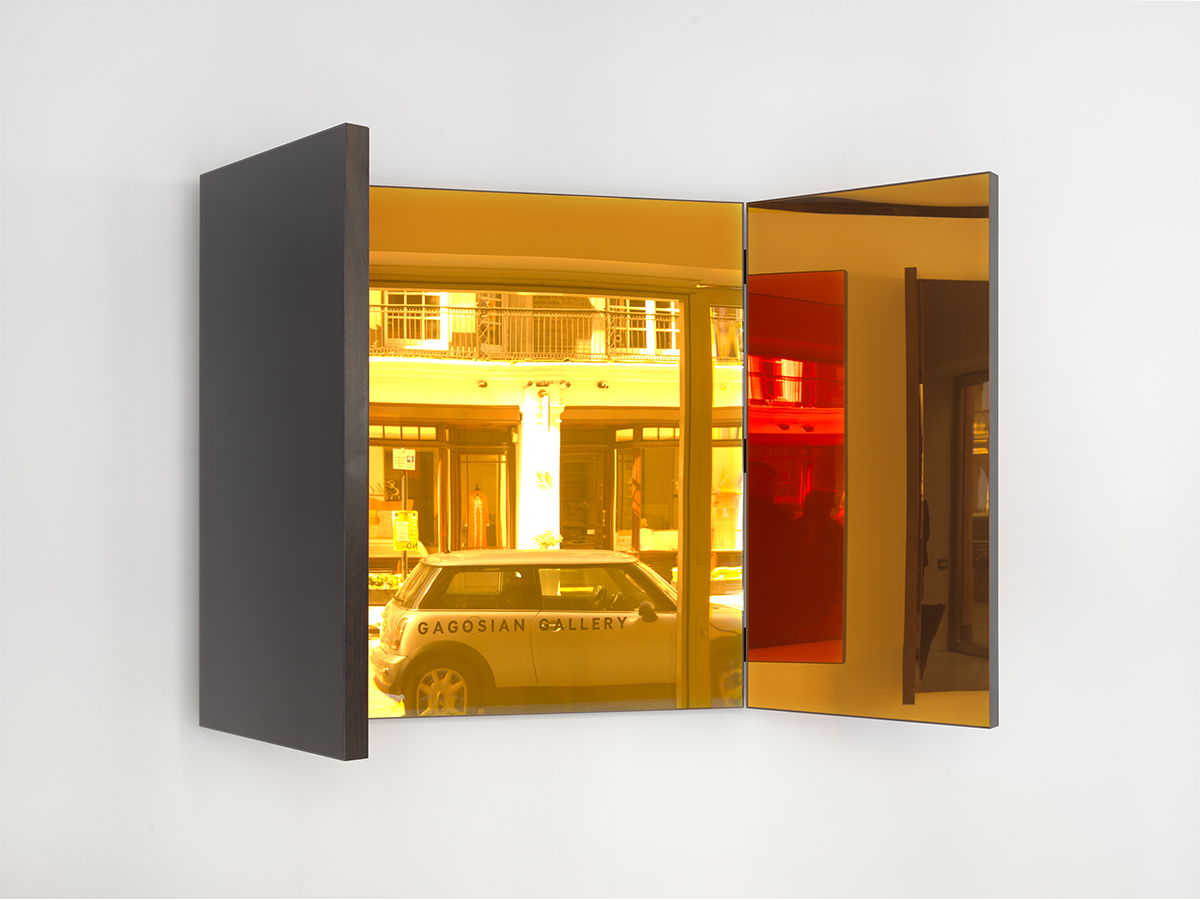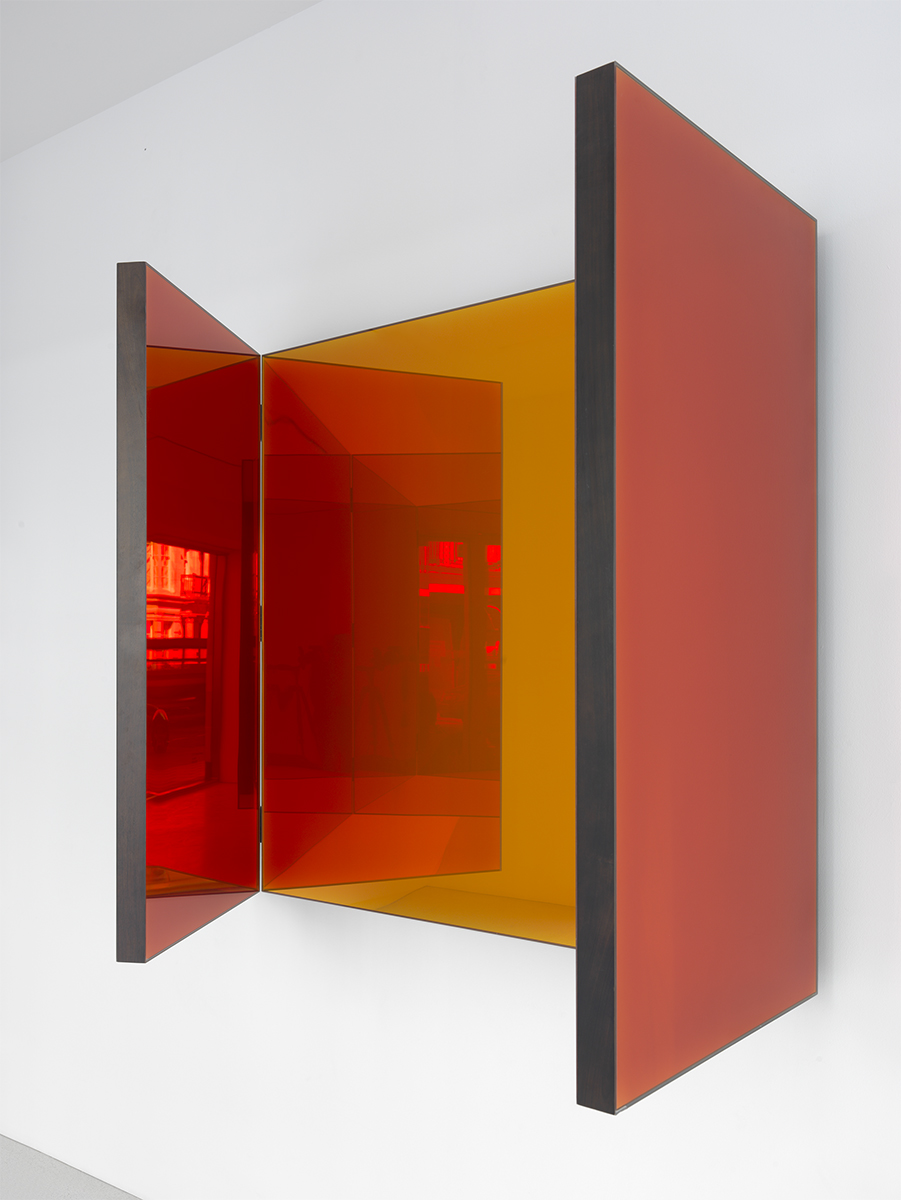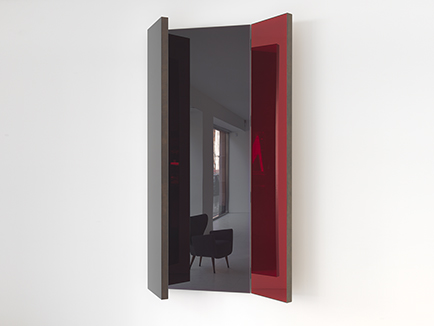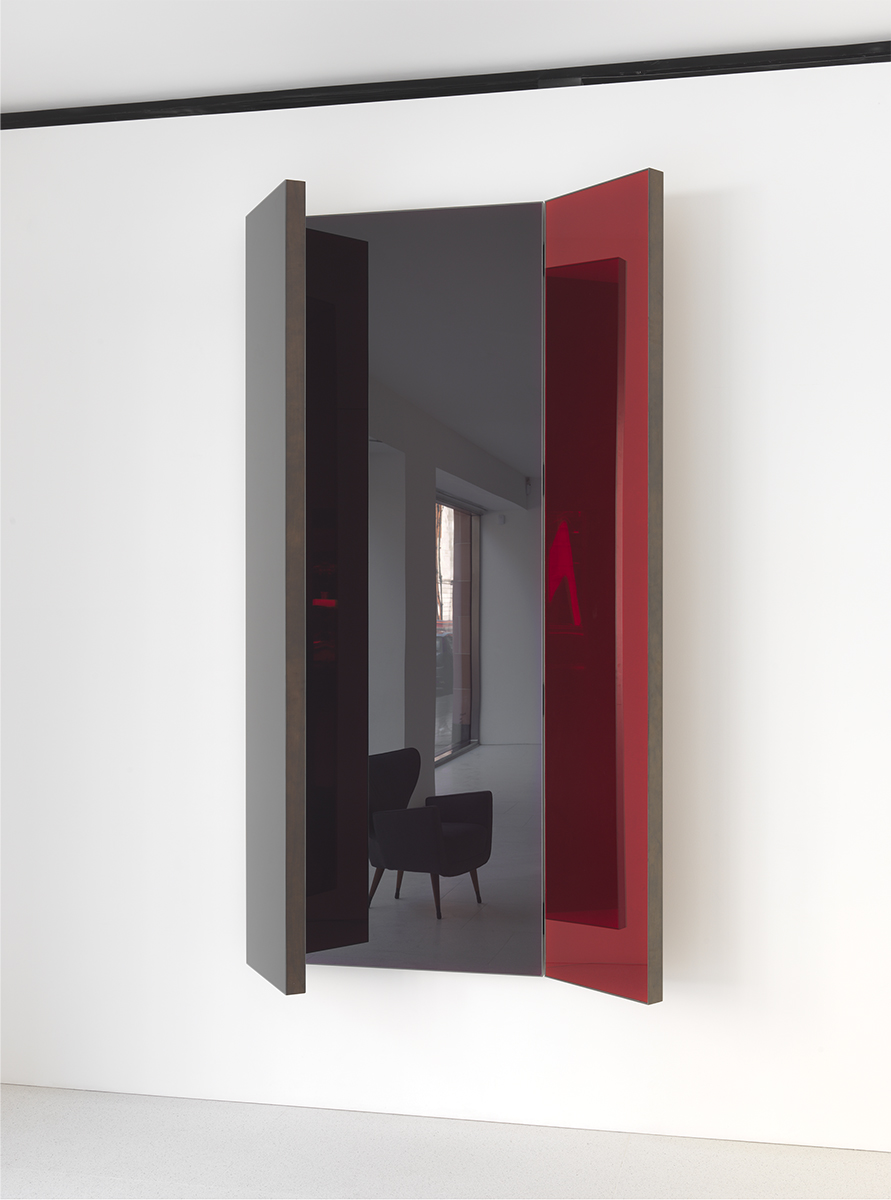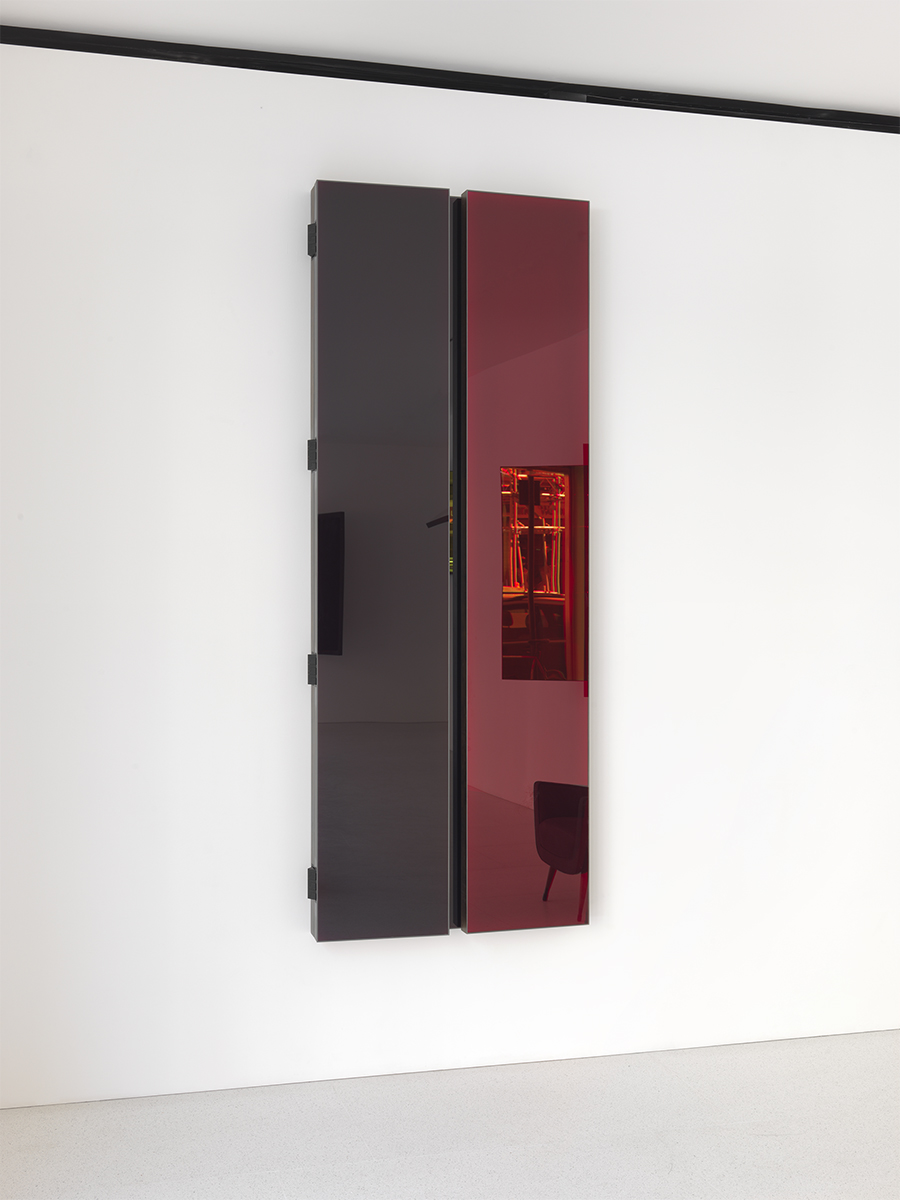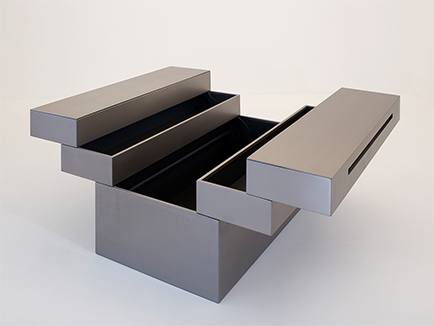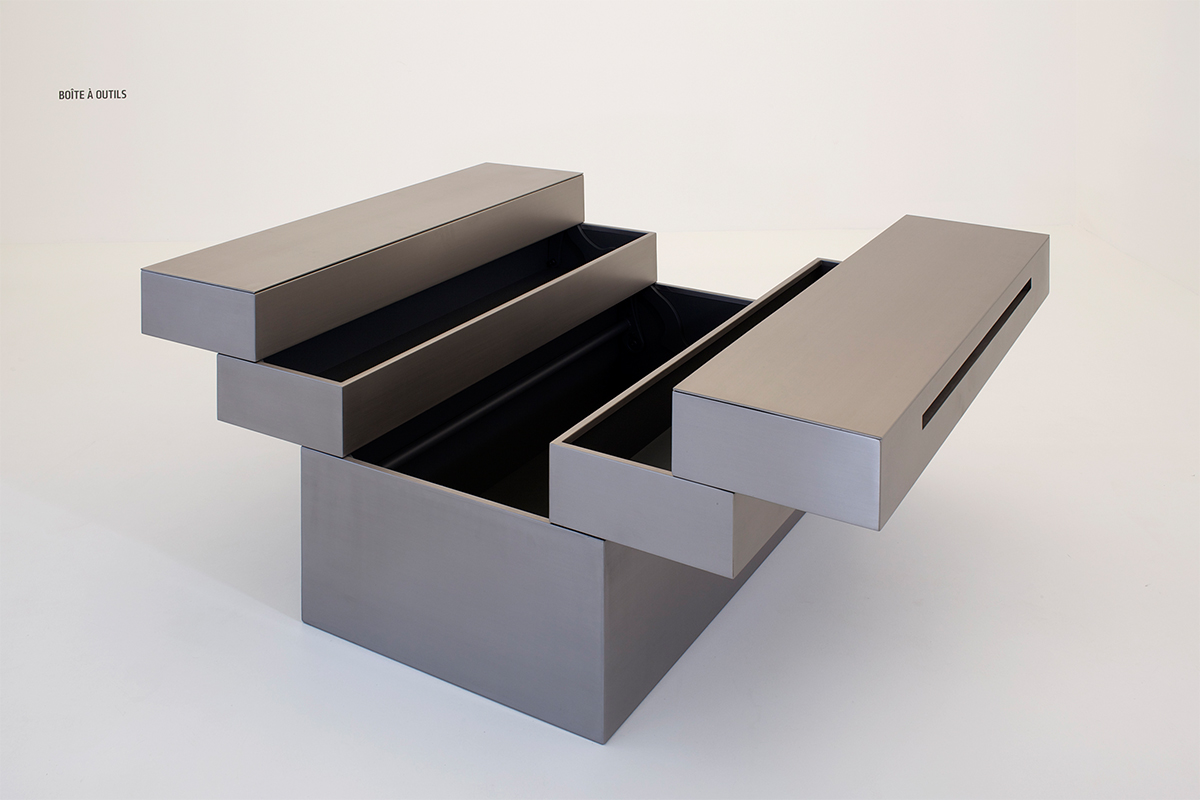Charles-Edouard Jeanneret, who chose to be known as Le Corbusier, was born in Switzerland in 1887. As architect, urban planner, painter, writer, designer and theorist, he was active mostly in France.
In 1922, Le Corbusier and his cousin Pierre Jeanneret opened an architectural studio in Paris at 35 rue de Sèvres, a partnership that would last until 1940. They began experimenting with furniture design after inviting the architect Charlotte Perriand to join the studio in 1928. The following year Le Corbusier, Pierre Jeanneret and Charlotte Perriand presented several models, including an armchair with tip-up back, a big and small version of the Grand Confort armchair, a chaise longue, a table and standard storage units at the Salon d’Automne in an installation titled Equipment for the Home.
Le Corbusier placed systems of harmony and proportion at the centre of his design philosophy. His faith in the mathematical order of the universe was closely bound to the golden section, which he explicitly used in his Modulor system for the scale of architectural proportion. He saw this system as a continuation of the long tradition of the works of Vitruvius, Leonardo da Vinci and Leon Battista Alberti, and others who used the proportions of the human body to improve the appearance and function of architecture. The Villa Savoye (1929-1931) exemplifies the ideas that Le Corbusier’ had been developing throughout the 1920s in his publications “Five points of architecture” and “Vers une architecture”.
After World War II, Le Corbusier sought efficient ways to house large numbers of people in response to the urban housing crisis. He believed that his new, modern architectural forms would provide an innovative solution that would raise the quality of life for the lower classes. Le Corbusier was at his most influential in the sphere of urban planning, and was a founding member of the Congrès International d’Architecture Moderne (CIAM). He realized some of his urban planning schemes on a small scale by constructing a series of unités (housing block units) around France. The most famous of these was the Unité d’Habitation of Marseilles (1946-1952). In the 1950s, a unique opportunity to translate his concept on a grand scale presented itself in the construction of Chandigarh, India.
His visionary books, his startling white houses and his progressive urban plans set him at the head of the modern movement in the 1920s, while in the 1930s he became more of a complex and skeptical explorer of cultural and architectural possibilities. Le Corbusier frequently shifted position, serving as ‘Old Master’ of the establishment of modern architecture and as unpredictable and charismatic leader for the young.
Before his death in 1965, he established the Fondation Le Corbusier in Paris to look after and make available to scholars his library, architectural drawings, sketches and paintings.

